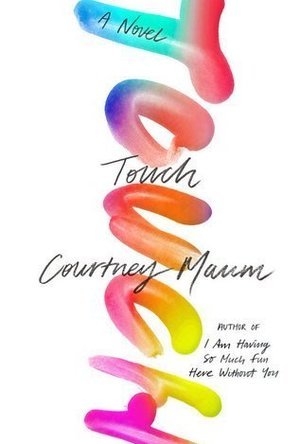
Sacred Hoop Magazine
Lifestyle and Magazines & Newspapers
App
Sacred Hoop, the world's leading magazine about shamanism, shows you ancient ways to enrich your...

DragonBox Algebra 5+
Education and Games
App
DragonBox Algebra 5+ - The game that secretly teaches algebra DragonBox Algebra 5+ Is perfect for...

Letter Quiz - alphabet tracing for kids
Games and Education
App
Letter Quiz is the best way to learn the English Alphabet with over 10,000 copies being purchased by...

Leisure Suit Larry: Reloaded
Games
App
It’s not just the funniest game you've ever played… …it’s also the most infamous video game...
Taryn K (444 KP) rated Otherworldly Izakaya Nobu Volume 2 (manga) in Books
May 15, 2022 (Updated May 15, 2022)
The book starts off with one of the soldiers from volume 1, Hans, stopping by the pub after training only to find out it's 'Kisu Day'. Hans is surprised to see Chef Nobu deep frying the tempura-battered fish and putting it on paper, which is a very expensive commodity in Aitheria. The little details really make this series special, I think.
In chapter 2, "Thief", we meet a new helper, a young girl trying to help out her family, named Effa. There is a bit of confusion, but we get to meet the new deacon in town, who has already become a regular.
Chapter 3, "An Uninvited Guest", Chef Nobu learns a 'new' recipe, and we are reminded that Shinobu can cook as well. A pompous little man and his gourmet aristocrat boss stop by in search of the Ankake Yudofu that pleased the bride-to-be in volume 1, as she praised it at her wedding. Each chapter builds ties to other people or builds ties between Shinobu/Chef and the regulars, which Is another thing I love. Ankake Yudofu is out of season, as it is no longer winter, so schnitzel is apparently just the ticket, if Chef just knew what it is.
Chapter 4, "Quarreling Craftsmen", sees two new characters introduced. Holga, a glassmaker who heard about Izakaya Nobu from the tax collector Gehrnot, who enjoyed the 'Spaghetti Napolitan' in volume 1, and Han's father, a woodworker named Laurenz. They spend most of the chapter arguing and trying each other's dishes, but it is a friendly rivalry that gets settled down by a surprising person.
Chapter 5, "The Commander's Weakness", is hilarious due to more puns on squid than I ever thought could be made, but Commander Bertholdt has to conquer his fear of squid before his arranged marriage to the daughter of a fisherman. Such a good chapter. One of my favorites. "He squidn't!"
Chapter 6, "Effa in Wonderland", sees Effa going through the back door of the pub into modern Japan. Not much cooking in this chapter, but we find out a little more about how the pub ended up being in two places at once. Thankfully, she gets back to Aitheria safe and sound.
I'm not completely sure about this being a review as much as a rundown of what happens. It's just a feel-good series, with just a hair of drama, but nothing that can't be resolved in a chapter or perhaps two. The characters are likeable, for the most part, and those who aren't are meant to be unlikeable. The interpersonal relationships are fun to see revealed. Definitely a good pre-bed book. 😊
Heather Cranmer (2721 KP) created a post
Nov 11, 2022
Purple Phoenix Games (2266 KP) rated Aroma in Tabletop Games
Feb 20, 2021
Aroma is a board game that originates from an essential oil company wishing to produce a board game utilizing its oils. Designer Odd Hackwelder then crafted a board game utilizing said essential oils that can be played four different ways. That’s right, Aroma is a game with four different play modes. Most of the modes revolve around the ability to guess the correct scent to score points. For this review I will be referencing rules for the Revolve mode with four players.
DISCLAIMER: We were provided a copy of this game for the purposes of this review. This is a retail copy of the game, so what you see in these photos is exactly what would be received in your box. I do not intend to cover every single rule included in the rulebook, but will describe the overall game flow and major rule set so that our readers may get a sense of how the game plays. For more in depth rules, you may purchase a copy online or from your FLGS. -T
To setup a game of Revolve each player will choose one of the themed player boards and bits from the following: Citrus, Trees, Plants, Floral. They will lay the boards touching in the middle of the table and their oil trays with essential oil bottles in front of them. Each player will also receive the wooden player token and scent tokens in their color. Place the wooden player tokens on the point tracker zero space and the game is setup to begin!
Revolve is played in rounds where each player will choose one of their oil vials from their tray, place its matching scent token face-down on their board and pass it to the player on their left simultaneously. The players then take the vials just given to them, smell the oils inside and try to guess its content scent by choosing the appropriate scent token and placing it face-down on the board in front of them as well. Play continues in this fashion until all players have smelled the vials from all players and made their guesses.
Players then flip over their scent tokens to compare what was given to them throughout the round and they will score points based on how many were guessed correctly. The players then choose a different vial and the process starts anew. The game ends at the end of the fourth round and the player with the most correct guesses is the winner!
Components. This game has pretty amazing components. The oil trays with the little oil bottles are great, but a little flimsy. The boards and scent tokens are thick, and the wooden player pieces are nice and medium-sized. The overall look of the game is very clean and colorful, reminiscent of the art style in T.I.M.E Stories, but with more colors and smells. Aside from the flimsy cardboard used in the oil trays, the rest of the components are top notch. I do have one gripe: the oil bottles themselves sometimes take quite a bit of effort to get the smell going. We tried manually rolling with our fingers, and the suggested technique of rolling on a sheet of paper (we used a paper napkin). The best way was to just drench oneself in essential oil by manually rolling the ball with one’s finger.
As a game Aroma’s Revolve is interesting and invokes feelings not normally used to describe board games. I have not played another game like it, nor one that I can remember using my sense of smell at all. For this point alone I feel attracted to Aroma. However, smelling all the scents over and over can sometimes get a little overwhelming for me. I KNOW what a lemon smells like, but when you pass around a vial and I sniff it, I feel like I am smelling lemon. When the card is revealed and it is actually grapefruit I just smelled I become frustrated. I guess I never realized how closely many things smell to other items in the same family. I like to reminisce about the first time I ever smelled pine, or its unmistakable scent down in my wood shop. But the pine scent in Aroma doesn’t really smell like pine to me. Maybe my snout is aging faster than I thought, but I am really no good at picking out some of these scents.
I have also played the Survive mode with just my wife and of course she always beats me. Survive is the only mode that is designed for two players, and I wish there were more. Getting together during the lockdown is difficult, and I game mostly with my wife. That said, on the rare occasion I got to play games with another couple in our quarantine pod I wanted to break Aroma out and try a different mode. Revolve is good, and Survive is good too, but I would prefer both with the full compliment of players.
If you are looking for something completely different for your collection, Aroma is it. I don’t know if it will make many gamers’ Top 10 lists, but it is so interesting to use the sense of smell in a board game that I think it is almost essential (see what I did there?). I mean that Aroma currently has no competition in the same space, so it will not be replaced by another similar game for quite some time, I’m sure. And what guest wouldn’t be impressed by playing a board game that includes 20 vials of essential oil? How novel is that, anyway? Purple Phoenix Games gives this one a lovely-sniffed 8 / 12. Do be warned: Aroma may accidentally perfume some other games it is stored near, but the scent is pleasant. At least I THINK it is. Now I’m doubting my ability to smell anything correctly.
Purple Phoenix Games (2266 KP) rated Dungeon Academy in Tabletop Games
Dec 8, 2020
In Dungeon Academy players are taking the roles of students attempting their finals to become graduated warriors and mages in the land. They must pass their tests though, and that entails surviving through the dreaded Dungeon four times and surpassing all opponents to receive their degree.
DISCLAIMER: We were provided a copy of this game for the purposes of this review. This is a retail copy of the game, so what you see in these photos is exactly what would be received in your box. I do not intend to cover every single rule included in the rulebook, but will describe the overall game flow and major rule set so that our readers may get a sense of how the game plays. For more in depth rules, you may purchase a copy online or from your FLGS. -T
To setup a solo game of Dungeon Academy, assemble the Dungeon component per the instructions. The player is dealt a character card with a special ability and markers to track Health and Mana throughout the game. Pile the Health and Mana tokens on the table, shuffle the Loot cards into a deck, and place the Teacher pawn nearby. Grab the pad of paper and pen and you are ready to begin.
Each attempt in the Dungeon will require the 16 Base Dice to be rolled and set inside the Dungeon. It is then flipped upside down when the timer begins and the mad dash to the Exit commences. As the player marks a line through every “room” (each die is considered a “room” in the Dungeon) they create a path to be checked at the end of the round. Once the player has made it through the Dungeon satisfactorily the Teacher will check the path.
The Teacher pawn is now used to track movement in the Dungeon. As the player tracks the path they drew on the paper, the Teacher is moved through the rooms. In each room (each die face) will be one of these possible encounters: a Mana potion to refill an empty Mana space on the character card, a Health potion, a small red Blob, a small blue Ghost, a large red Colossus, or a large blue Reaper. Each small foe encountered will be overtaken by spending one Health or Mana token from the character card. Each potion will restore spent Health or Mana. Each large foe encountered will require two Health or Mana to be spent. As the Teacher follows the path set by the player, Health and Mana will be spent and replenished on the character card, and foes defeated tracked on the sheet.
Once complete, the player will add up all the points from defeated foes (1VP per foe) and any VP from special character abilities or Loot cards. Additionally, the player will choose one of the four Quests at the bottom of the sheet to score each round for extra VP. They write these numbers on the sheet and prepare for the next level. After four total levels the game ends and the total is compared to a scale in the rulebook.
Multiplayer Dungeon Academy works the exact same way except once a player exits the Dungeon, they must grab the lowest-numbered Exit card as representation of the place finished in the Dungeon (so the first one out grabs the 1 card, etc.). The other difference from solo play is that players all compare total VP at the game end to determine the winner.
Components. This game has a large scorepad of 150 double-sided sheets, a bunch of cards for Hero characters, Loot, and Exits, as well as 18 total dice, about a trillion double-sided Health/Mana tokens and an impressive cardboard Dungeon. Everything is of wonderful Matagot quality… except for the Duneon. In my copy the Dungeon does not stay together very well. I may attempt some glue to keep the parts down that need to stay down, but it is still functional and a great design. The art style across the game is cute and fun, and I like the muted bright color scheme. That feels so weird to say/type, but the colors are vibrant hues, but muted so they stay out of the way. It’s strange and I love it.
Speaking of I love it, I love this game! It is quickly becoming one of my favorite roll-and-write games, and I can play it solo. In about 15 minutes. These are all positives, and I haven’t even really touched on the gameplay. Being able to get through a light solo game in 15 minutes while having a great time throughout is an achievement, and one I would like to applaud here. I wasn’t really sure going into this if I was going to enjoy it, but it has blown me away. Trying to evaluate the best path through the Dungeon while keeping track of how the Health and Mana is always in flux gives my brain a welcomed workout that is just a breath of fresh air for me. I love the art style and the theme, and the simple but easy to understand iconography on the dice is much appreciated.
I think that if you are looking for or lacking a similar type game in your collection you should do yourself a favor and check out Dungeon Academy. It is super quick, easy to grasp and play, requires little table space, and is simply a great time alone or with your gamer friends and family. I know I am going to be tracking lots of plays with this one. I am going to have to find a place on my shelves at eye-level because I don’t want it to be overshadowed down at foot-level.
If you already enjoy roll-and-write games and want something a little different with a great theme, or you don’t have any roll-and-writes and want to check one out for the first time, or you simply cannot get enough games featuring great art about wizards in school check this one out. I recommend it.
Movie Metropolis (309 KP) rated Noah (2014) in Movies
Jun 11, 2019
Now, 10 years on from that, Black Swan director Darren Aronofsky breathes new life into the biblical genre with his take on the classic ‘Noah’ tale. But can his sixth attempt behind the camera reverse the ailing genre’s fortunes?
Unfortunately, the answer is no. From lacklustre special effects to dreadful acting, Aronofsky’s biblical epic fails from start to finish, with only a few key scenes lifting it above The Passion of the Christ.
Noah follows the story of the titular hero played by Russell Crowe as he sets out on a mission given to him by the ‘Creator’ to rid the world of its evil and to start afresh. Jennifer Connelly plays Noah’s wife Naameh and Ray Winstone portrays his arch nemesis, Tubal-cain.
The story is like the tale we all know, but on steroids. Gone is the subtlety of the bibleNoah-poster version and in its place is a stark environmental message as Noah tells his family and those around him that humans have destroyed the planet and that we ourselves, must be destroyed. From stone angels sent to watch over the human race, to the addition of numerous characters, Noah rids the story of its depth in favour of poor special effects and anti-climatic battles. It’s a real shame as Aronofsky has proven himself to be utterly talented behind the lens.
The performances are also well-below what we expect from such gifted actors. Emma Watson’s take of Ila, Noah’s daughter-in-law is laughable at best; a world away from the talent we saw towards the end of the Harry Potter series. Jennifer Connelly is outstandingly poor and Russell Crowe seems to be on auto-pilot as he spouts meaningless drivel. Only Anthony Hopkins leaves his fine reputation in tact as Methuselah, though he is in the film for less than 15 minutes.
Moreover, the best and most memorable part from the bible story, the animals, is completely misguided. Not only are they playing second fiddle to the ridiculous rivalry between Noah and Ray Winstone’s idiotic villain, they are rendered in such poor CGI, you never truly believe that they are there. The elephants and snakes in particular are very shoddy.
Thankfully all is not lost. Being a Darren Aronofsky film, Noah is a beautifully shot film. The cinematography is outstanding with stunning vistas of a huge variety of landscapes and the inclusion of an exciting Genesis featurette in the latter half of the picture are real highlights.
At 138 minutes Noah is a true bum-number and there’ll be lots of shuffling about in your seat as you struggle to digest each and every part of information the film shoves down your throat.
Unfortunately, a promising marketing campaign and some good trailers mask a film which never rises above average. The special effects really needed much more work and the acting is very poor. Only a few stand-out scenes stop it from falling below The Passion of the Christ as another biblical turkey.
https://moviemetropolis.net/2014/04/14/noah-review/
This book immediately got off on the wrong foot with me as the main character ranted against how society has changed--using peanut allergies and the horror of having to avoid her favorite peanut-filled treats on a plane as proof. As someone with a kid with a peanut allergy (who has met these lovely people on planes in real life), I was already turned off by Sloane. <i>It never really got any better. </i>
Sloane is supposedly a trend forecaster. Her entire life she's been able to "see" things and predict where society is going with certain trends. She is credited with foreseeing the famous "swipe" action. The problem Sloane faces now is that she thinks society is going to turn against the technology it has come to hold so dear: something that doesn't sit well with the technology-focused firm, Mammoth, who has hired her. After all, Mammoth uses a driverless car to transport Sloane while she works for them. They want her to present at a convention that aims to showcase technology for the childless set.
On the surface, this doesn't sound so bad. Consider parts of it satire and a critique on our tech-obsessed society, and it has real promise. Unfortunately, for me, <i>the premise fell flat.</i> My favorite character wound up being Anastasia, the driverless car. Sloane's boyfriend, Roman, wears a Zentai suit (imagine a full-length wet-suit that covers his entire body) and preaches an anti-touch, pro-cybersex agenda. He's strange. That whole part of the plot is weird, albeit one that offers the occasional comic moment. Maybe my sense of humor is not finely developed enough?
The book nails a lot of the corporate world (you can certainly picture Dax, the head of Mammoth, and many of his worker bees). Other parts of the plot are harder to swallow. Sloane waffles. Roman irritates. The dialogue is oddly written at times. Large pieces of the plot didn't really seem necessary. Other pieces were interesting, but felt like reading a research paper (and I found myself skimming).
So while there were certainly funny moments (and it picked up a bit as it neared the end), overall I just found myself cringing. I didn't like the plot, I never warmed up to Sloane, and I wanted to hit Roman and Dax. Maybe I missed a higher meaning to this novel, as it seems to be getting a lot of better reviews, so take mine with a grain of salt. For me, I just didn't enjoy reading it, and that's why (and I debated this a while), I'm going with 2.5 stars.
I received a copy of this novel from the publisher and Netgalley (thank you!) in return for an unbiased review. It is available everywhere as of 05/30/2017.
<center><a href="http://justacatandabookatherside.blogspot.com/">Blog</a>; ~ <a href="https://twitter.com/mwcmoto">Twitter</a>; ~ <a href="https://www.facebook.com/justacatandabook/">Facebook</a>; ~ <a href="https://plus.google.com/u/0/+KristyHamiltonbooks">Google+</a></center>;




